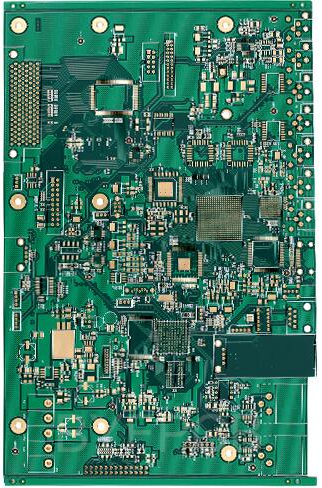There are many manifestations of high-speed PCB problems, such as overshoot, crosstalk, ringing, and so on. In order to facilitate the classification and research, some mainstream simulation software vendors have made the following divisions:
Common SI problems: reflection, crosstalk, overshoot, undershoot, monotonicity, etc.; solve driving problems, calculation of termination resistance or series damping resistance, calculation of PCB laminated structure and characteristic impedance, and analysis of wiring topology.
At the end of the last century, companies such as Huawei and ZTE introduced advanced simulation experience from abroad and promoted them in China. Over the years, the industry has accumulated more experience on common SI problems. Everyone began to pay attention to the stacking design plan, paying attention to the impact of the reference plane; know the concept and importance of impedance control, and strictly control the impedance in the design and board manufacturing links; have a certain research on the topology and termination matching methods and can be used Based on actual design. It should be said that the research and analysis of common SI problems have been relatively mature.
Timing: Timing is the key issue. Current designers basically use the ready-made solutions of core chip manufacturers. Therefore, the main part of the design is how to ensure that the PCB can meet the timing required by the chip.

The timing problem is relatively complicated, and the support of mainstream simulation software is not very good (Sisoft has a software dedicated to timing analysis called Quantum-SI, which I have not used). Everyone has a little understanding of timing, and you can see the current situation of timing design by looking at the various chaotic isometric requirements. In the follow-up discussion, the author will focus on the exchange of timing issues, and discuss in detail the common clock, source synchronous clock, internal synchronous clock and other categories.
Simulation problems above MGH: the transmission problems in the microwave range, usually referred to as GHz simulation analysis. The design needs to solve various problems that are usually only considered in the microwave field due to small-size shapes such as traces, vias, and materials on the transmission link.
This is also the more popular "field" field simulation in recent years, involving a wider range of knowledge, requiring simulation engineers to have knowledge in the "field" field. At the same time, this is also a battleground for software manufacturers. In addition to the traditional industry standard HFSS, there are ADS and CST. These three seem to monopolize the 3D Full wave EM field. With the reputation of Power SI, Sigrity also has its own foothold. Hyperlynx acquired the 3D modeling manufacturer Zealand IE3D last year, and has also set foot in the field of 3D field simulation. Only Cadence insists on its own development route and is long overdue in the field of 3D Full wave EM., Claiming that a practical version will be launched next year, and it will take time to be recognized by the industry. MGH simulation is more dependent on software. Unlike timing and common SI problems, you can also get useful conclusions through human analysis and calculations. Regarding MGH, there are also special topics for analysis and discussion later.
In addition to SI, PI is becoming more and more popular recently. As the voltage continues to decrease and the power consumption becomes larger and larger, PI has gradually got rid of the embarrassment of saving a few capacitors, which is of no practical use. More simulation engineers are focusing on the PI field, and the co-simulation of PI and SI has become a hot topic in the near future. DesignCon 2006, 2007 and other consecutive years, PI has been one of the main topics.
The main goals of PI analysis are:
- Find the "hot spots" of current and temperature;
- Guiding cascading design and plane division;
- Optimize the selection and layout of capacitors;
- Find the resonant frequency point of the power supply network as soon as possible;
- Guide the design of the power supply through the time domain simulation of the power supply;
PI mainly simulates the DC voltage drop problem from the DC aspect, that is, IR-Drop. This piece of simulation software is relatively mature, and the algorithm is relatively simple. Many PCB factories use the new PDN tool of Cadence SPB16.5. For simulation, the traditional Power DC and SI wave are also doing very well in this field. Another aspect is to analyze from the perspective of the target impedance of the power plane. The combination of Power SI and Speed 2000 can be said to be the originator of this field. SI Wave has always done a good job. Cadence's PDN can be regarded as catching up and let PI The engineer has one more choice. The more trendy ones are Optimize PI, which adds a simple and intuitive tool for capacitance optimization and PI simulation, which is similar to a point-and-shoot camera in photography, and everyone can use it.